 Your new post is loading...
 Your new post is loading...

|
Scooped by
Gust MEES
|
Changing The Learning Process
Until now, this level of personalization has been limited to small classrooms, though AI makes every classroom feel like a small one. AI systems analyze students' progress on a scale that teachers alone cannot, effectively minimizing the student-teacher ratio problem. AI systems also erase distance. Learning happens anywhere at any time.
Another benefit of AI-augmented education is that it isn't judgemental. Constructive criticism from an AI tutor can feel less intimidating than a fellow human. Students, especially the underserved, who may not be accustomed to such feedback, are likely to respond more positively to this feedback and are thus more likely to seek it out in the future. Feedback from AI systems is instantaneous and thereby extremely effective and can be acted on immediately. Learn more / En savoir plus / Mehr erfahren: https://www.scoop.it/t/21st-century-learning-and-teaching/?&tag=AI https://www.scoop.it/t/21st-century-innovative-technologies-and-developments/?&tag=AI

|
Scooped by
Gust MEES
|

|
Scooped by
Gust MEES
|
SO, you are a retired EDUcator, TEACHer, Instructor, LEHRENDER: WHAT to do NOW?!! Well, that was the question I was asking myself when I became retired in 2014. As I did innovation in Modern-EDUcation in my country Luxembourg, there was NO WAY to give that up, BTW! SO, years before my retirement I… Learn more / En savoir plus / Mehr erfahren: https://gustmees.wordpress.com/

|
Scooped by
Gust MEES
|
What is metacognition?
Metacognition, a term that was first defined by John H. Flavell in 1979, is basically thinking about thinking. With metacognition, we become aware of our own learning experiences and the activities we involve ourselves in our paths toward personal and professional growth. We are better able to understand ourselves in the whole process of learning and can develop skills to think about, connect with, and evaluate our learning and interactions each day. But how and why is metacognition important in education?
It has been identified as an essential skill for learner success. Therefore, do we need to design specific lessons focused on metacognition for use in our classrooms each day? And if so, how can we make this happen?
Learn more / En savoir plus / Mehr erfahren: https://www.scoop.it/t/21st-century-learning-and-teaching/?&tag=Metacognition

|
Scooped by
Gust MEES
|
If you have just started embarking your journey through the Design Thinking process, things might seem a little overwhelming. This is why we have prepared a useful overview of the Design Thinking process, as well as some of the popular Design Thinking frameworks commonly used by global design firms and national design agencies.
To begin, let’s have a quick overview of the fundamental principles behind Design Thinking:
Design Thinking starts with empathy, a deep human focus, in order to gain insights which may reveal new and unexplored ways of seeing, and courses of action to follow in bringing about preferred situations for business and society.
It involves reframing the perceived problem or challenge at hand, and gaining perspectives, which allow a more holistic look at the path towards these preferred situations.
It encourages collaborative, multi-disciplinary teamwork to leverage the skills, personalities and thinking styles of many in order to solve multifaceted problems.
It initially employs divergent styles of thinking to explore as many possibilities, deferring judgment and creating an open ideations space to allow for the maximum number of ideas and points of view to surface.
It later employs convergent styles of thinking to isolate potential solution streams, combining and refining insights and more mature ideas, which pave a path forward.
It engages in early exploration of selected ideas, rapidly modelling potential solutions to encourage learning while doing, and allow for gaining additional insight into the viability of solutions before too much time or money has been spent
Tests the prototypes which survive the processes further to remove any potential issues.
Iterates through the various stages, revisiting empathetic frames of mind and then redefining the challenge as new knowledge and insight is gained along the way.
It starts off chaotic and cloudy steamrolling towards points of clarity until a desirable, feasible and viable solution emerges.
As we have seen from the definitions and descriptions, Design Thinking means many things to many people, and this theme persists into the practical implementation as well. There are a wide variety of process breakdowns and visualisations ranging typically between 3 and 7 steps. Each process step or phase embodies one or more of the core ingredients of design thinking that being, reframing, empathy, ideation, prototyping and testing. These different implementation frameworks or models might have different names and number of stages, but they embody the same principles laid out in the bullet points above.
Learn more / En savoir plus / Mehr erfahren: https://www.scoop.it/t/21st-century-learning-and-teaching/?&tag=Design-Thinking https://gustmees.wordpress.com/2014/10/03/design-the-learning-of-your-learners-students-ideas/

|
Scooped by
Gust MEES
|
Part of the challenge facing educationalists is that technological change will call for skills that fall outside of age-old approaches to curriculum design and teaching. Emotional intelligence, creative thinking, and collaboration are just three core aptitudes that will be needed, but which cannot easily be taught in a traditional classroom environment. “Updating curriculum should always be on the agenda,” says Jaime Saavedra of the World Bank, quoted in the WEFFI report. “But it is incredibly urgent to invest in changing the behaviour of teachers and improving what happens inside the classroom. Learn more / En savoir plus / Mehr erfahren:

|
Scooped by
Gust MEES
|
The expectations we place on teachers are high and growing. We expect them to have a deep and broad understanding of what they teach, how their students learn, and of the students themselves. We also expect them to be passionate, compassionate and thoughtful; to make learning central and encourage students’ engagement and responsibility; to respond effectively to the needs of students from different backgrounds and languages; to promote tolerance and social cohesion; to provide continual feedback and assessments of students; and to ensure that students feel valued and included in collaborative learning. We expect teachers to collaborate with each other, and to work with other schools and parents to set common goals and monitor their attainment.
These expectations are so high, in part, because teachers make such a difference in students’ lives. People who are successful today typically had a teacher who took a real interest in their life and aspirations; someone who helped them understand who they are, discover their passions and realise how they can build on their strengths; a teacher who taught them how to love to learn and helped them find ways to contribute to social progress.
But our education systems are not keeping up. Most schools look much the same today as they did a generation ago, and teachers often don’t have the opportunities to develop the practices and skills required to meet the diverse needs of today’s learners. To help advance the education agenda, the Finnish Ministry of Education, with support from the OECD and Education International, brought together education ministers, union leaders and other teacher leaders in Helsinki this month for the ninth International Summit on the Teaching Profession. Over the years, the Summit has become a seminal event for education policy discourse, with this year’s edition attracting 21 education ministers and the union leaders from the best performing and most rapidly improving education systems, as measured by PISA. Learn more / En savoir plus / Mehr erfahren: https://www.scoop.it/t/21st-century-learning-and-teaching/?&tag=OECD

|
Scooped by
Gust MEES
|
What are the kind of things a 21st century teacher needs to know and be able to do? What about 21st century students? What education technology works, and what is a waste of time? What would a checklist for 21st century teaching look like?
Does ‘21st-century teaching’ even make sense to use as a phrase anymore? If not, do we just say ‘teaching’? Does that fit our needs to innovate our collective profession to meet a modern circumstance?
These are among the questions today’s teachers have to face daily–in the classroom, mass media, professional development, and more. These conversations can get complex, opinionated, stuffed with rhetoric, and downright overwhelming at times. In response, Sylvia Duckworth has made consistent contributions to this conversation by creating colorful illustrations that communicate many of these ideas in easy-to-skim, easy-on-the-eyes, tempting to pin and share graphics. Learn more / En savoir plus / Mehr erfahren: https://www.scoop.it/t/21st-century-learning-and-teaching/?&tag=modern-education

|
Scooped by
Gust MEES
|
When students are provided consistent opportunities to develop and discuss complex questions, they’re empowered with knowledge, curiosity, and intellectual courage. We can make our classrooms places that encourage students to keep asking questions—which are the foundation of learning.
CREATING A CLIMATE FOR QUESTIONING
Modeling questioning strategies that get all students involved allows students to develop confidence in their own ability to craft meaningful questions and share their responses. We also need to establish classroom procedures for respectful dialogue so that students feel safe in sharing their thinking with their peers.
I indirectly model questioning strategies by carefully considering the questions I ask. I set up the year with a few questions that are then discussed throughout the year. Through seminar discussions and reflective writing in the spring, for example, I use questions such as “How does where you live impact how you live?,” “How do humans continue to progress in a diverse world?,” and “How does constructive conversation cultivate empathy and promote participation in local and global communities?” to discuss content as well as to make connections to the world.
Students consider these questions as they participate in the Spotlight Challenge, a design thinking project I created to facilitate opportunities for students to conduct research, craft speeches, and call their peers to action. Consistently making these connections helps create a climate in which students become accustomed to questioning everything. Learn more / En savoir plus / Mehr erfahren: https://www.scoop.it/t/21st-century-learning-and-teaching/?&tag=questions

|
Scooped by
Gust MEES
|
Si l’école se concentre sur la mémorisation et le calcul, l’homme sera un jour dépassé par la machine, prévient François Taddei. D’où la nécessité d’enseigner à l’école coopération, créativité, communication, critique constructive et compassion. François Taddei
Polytechnicien, directeur de recherche à l’Inserm, auteur du livre Apprendre au XXIe siècle (1)
La Croix : La diffusion du numérique marque-t-elle une rupture dans l’histoire de l’école ?
François Taddei : Avec le numérique, l’école ne fait pas table rase du passé. Elle s’enrichit de nouvelles possibilités pédagogiques, suivant une évolution graduelle et hétérogène. Certains professeurs recourent beaucoup à ces outils, d’autres moins. De même, certains vont utiliser un tableau blanc interactif sans abandonner leurs méthodes d’enseignement très frontales.
Il n’empêche, les technologies de l’information et de la communication pour l’enseignement démultiplient les opportunités. En 1920, Célestin Freinet utilisait l’imprimerie pour permettre à la classe de communiquer avec le reste du monde. Aujourd’hui, le numérique permet de décloisonner instantanément la classe, par exemple en lui permettant de rédiger collectivement de courts textes postés sur Twitter.
De plus, on a accès, avec Internet, à une masse infinie d’informations situées hors des murs de l’école, à une multitude d’interactions avec l’extérieur. Si un enseignant et ses élèves s’intéressent au climat, ils peuvent aujourd’hui entrer en contact avec des chercheurs en mission dans l’Antarctique ! Learn more / En savoir plus / Mehr erfahren: https://www.scoop.it/t/21st-century-learning-and-teaching/?&tag=Modern+Learning https://www.scoop.it/t/21st-century-learning-and-teaching/?&tag=modern-education

|
Scooped by
Gust MEES
|
Kuhn's idea was, itself, revolutionary in its time. It caused a major change in the way that academics talk about science; and, so, it may be that it caused (or was part of) a "paradigm shift" in the history and sociology of science. However, Kuhn would not recognize such a paradigm shift.

|
Scooped by
Gust MEES
|
World Class
How to Build a 21st-Century School System
In a world where the kind of things that are easy to teach and test have also become easy to digitise and automate, it will be our imagination, our awareness and our sense of responsibility that will enable us to harness the opportunities of the 21st century to shape the world for the better. Tomorrow’s schools will need to help students think for themselves and join others, with empathy, in work and citizenship. They will need to help students develop a strong sense of right and wrong, and sensitivity to the claims that others make. What will it take for schools to be able to do this? Andreas Schleicher, initiator of the OECD Programme for International Student Assessment (PISA) and an international authority on education policy, has accompanied education leaders in over 70 countries in their efforts to design and implement forward-looking policies and practices.
While improvement in education is far easier to proclaim than achieve, in this book Schleicher examines the many successes from which we can learn. This does not mean copying and pasting solutions from other schools or countries, but rather looking seriously and dispassionately at good practice in our own countries and elsewhere to understand what works in which contexts. Trained in physics, Schleicher offers a unique perspective on education reform: he convincingly argues that it should not necessarily be less of an art, but more of a science. “No one knows more about education around the world than Andreas Schleicher. Full stop. For the first time, he's collected 20 years worth of wisdom in one place. World Class should be required reading for policy makers, education leaders and anyone who wants to know how our schools can adapt for the modern world – and help all kids learn to think for themselves.” – Amanda Ripley, author of The Smartest Kids in the World, a New York Times bestseller “[Schleicher]…grasps all the key issues, and does so through keeping his ear to the ground and by working out solutions jointly with a variety of leaders at all levels of the system, and in diverse societies” – Michael Fullan, Global Leadership Director, New Pedagogies for Deep Learning “Every visionary leader who is serious about improving student learning should add the data-driven World Class: Learn more / En savoir plus / Mehr erfahren: https://www.scoop.it/t/21st-century-learning-and-teaching/?&tag=OECD

|
Scooped by
Gust MEES
|
Flipping the curriculum could help us meet the demands of the artificial-intelligence era
Technologies such as artificial intelligence, robotics, and biotech are redefining what it means to be human—and employable.
Jobs are disappearing as automation replaces the need for people. New occupations are emerging that demand competencies that can transfer across the multiple assignments workers will experience in their lives. The disappearance of global boundaries presents opportunities—and risks—for all workers.
These changes demand a significant, ambitious evolution in how we prepare students for their future in a world that's increasingly volatile, uncertain, complex, and ambiguous. We need a relevant and modernized education. Learn more / En savoir plus / Mehr erfahren: https://www.scoop.it/t/21st-century-learning-and-teaching/?&tag=modern-education
|

|
Scooped by
Gust MEES
|
Why do we need STEAM?
STEAM incorporates the benefits of STEM in and through the arts to give a more complete, well-rounded education. Although some feel this distinction is unnecessary because regular STEM incorporates creativity, leaders of the STEAM movement feel that the arts provides a critical missing piece to STEM education that then prepares students to not only understand science, technology, engineering, and math but know how to apply principles from each of these disciplines to creatively solve problems. Here's how educationalist Sir Ken Robinson discusses STEAM in his TedTalk.
While the STEAM movement is still relatively new, it's gaining "steam." In fact, the revered children's education program Sesame Street has added STEAM to its program. Problem-solvers in the future will have to look beyond what first feels like a limitation and approach challenges with inquiry, wonder, and innovation. These are skills that the arts exercise.
In order to create a successful STEAM program, it is essential that the arts are included in STEM in an authentic way. It’s not about adding creativity to STEM, but rather to apply art in real-world situations. For example, if students had an assignment to create a product as a STEM project, incorporating arts in an authentic way would be to improve the appearance or design of the product using principles of industrial design. Learn more / En savoir plus / Mehr erfahren: https://www.scoop.it/topic/21st-century-learning-and-teaching/?&tag=STEAM

|
Scooped by
Gust MEES
|

|
Scooped by
Gust MEES
|

|
Scooped by
Gust MEES
|
In Carol Dweck’s famous study on growth mindset, Dweck taught high school students about brain plasticity and about how the characteristics of intelligence are not fixed. The idea was to convince students that they had control over improving their academic ability. Years later, these students scored higher on standardized tests.
It’s tempting to think of the Dweck study as a near instant fix. You teach students, or yourself, the details of growth mindset. This takes about an hour. And then afterward your performance magically improves.
Although Dweck’s study has been supported by future studies, for example this one, I suspect there is a crucial missing element to the story. What behaviors did the students change after the lesson? Knowing this is the key to understanding how you can improve your own life.
Learn more / En savoir plus / Mehr erfahren: http://www.scoop.it/t/21st-century-learning-and-teaching/?&tag=carol+dweck http://www.scoop.it/t/21st-century-learning-and-teaching/?&tag=Growth+Mindset

|
Scooped by
Gust MEES
|
As the world fills with more sophisticated AI and ubiquitous technology, human skills--compassion, empathy, etc.--will define the competitive edge of workers and entire organizations. So those interested in thriving in a high-tech world must put renewed prioritization on emotional intelligence and soft skills.
Soft skills represent the top three missing skills of job applicants according to the Society of Human Resource Management's (SHRM) 2019 State of the Workplace.
Top 6 Missing Skills in Job Applicants
Problem-solving, critical thinking, innovation, and creativity (37 percent)
Ability to deal with complexity and ambiguity (32 percent)
Communication (31 percent)
Trade skills (carpentry, plumbing, welding, machining, etc.) (31 percent)
Data analysis / Data science (20 percent)
Science / Engineering / Medical (18 percent)
The significance of developing and applying social and emotional skills is growing. Soft skills are twice as predictive of a student's academic achievement as home environment and demographics and 30-40 percent of jobs in growth industries require soft skills. Additionally, 57 percent of leaders say soft skills are more important than hard skills.
Learn more / En savoir plus / Mehr erfahren: http://www.scoop.it/t/21st-century-learning-and-teaching/?&tag=Empathy https://www.scoop.it/topic/21st-century-learning-and-teaching/?&tag=DQ http://www.scoop.it/t/21st-century-learning-and-teaching/?tag=Empathy http://www.scoop.it/t/21st-century-learning-and-teaching/?tag=Soft+Skills

|
Scooped by
Gust MEES
|
Michael Young was working one-on-one with a student when he heard a voice: "Maybe pause a little bit longer and wait for the student to respond."
It wasn't his internal monologue reminding him of something he learned in training. The voice belonged to an instructional coach 50 miles away, who was watching what Young was doing in the classroom through a livestream and communicating via an earpiece.
"It was really nice to feel supported and get direct feedback in the moment, because as much as you can do that through somebody being there and watching you, they always do it afterwards or by interrupting [the lesson]," said Young, who teaches special education at Elk Ridge Elementary School in Buckley, Wash. "It was helpful information that changed the way I taught."
The practice is called bug-in-ear coaching, and it has been around for decades in different sectors in some capacity. But in recent years, more and more educators are beginning to try it out. Learn more / En savoir plus / Mehr erfahren: https://www.scoop.it/topic/21st-century-learning-and-teaching/?&tag=Training https://www.scoop.it/topic/21st-century-learning-and-teaching/?&tag=Coaching

|
Scooped by
Gust MEES
|

|
Scooped by
Gust MEES
|

|
Scooped by
Gust MEES
|
Operated by national charter school management company Carpe Diem Learning Systems, Carpe Diem Innovative School – Northwest works to ensure students are educated with knowledge, empowered with character and equipped for life.
The free, public charter schools educate students via a personalized learning model, which combines a rigorous online curriculum with project-based learning led by highly-effective licensed teachers in the classroom. Our students learn in a small, safe campus focused on developing relationships to help scholars seize the day and make the most of each day’s educational opportunities.
Students are met at their instructional level to build competency and confidence through hard work and encouragement. Instead of a student having to wait for a classroom of peers, he or she is rewarded with being able to move on to meet career and educational goals. You will immediately see how Carpe Diem Innovative School – Northwest stands out from any other school. Learn more / En savoir plus / Mehr erfahren: https://www.scoop.it/t/21st-century-learning-and-teaching/?&tag=modern-education

|
Scooped by
Gust MEES
|
Ist die klassische Berufsausbildung überholt? Um die Ausbildung flexibler gestalten zu können, könnten 36 Level statt drei Ausbildungsjahre eingeführt werden.
Die Digitalisierung erhält immer schneller Einzug in die Ausbildungswelt. Azubis können sich ihre Arbeitsanweisungen mittlerweile aus der Cloud ziehen, Maschinen schon lange mit Tablets bedienen und in sozialen Netzwerken lernen. Und auch die Berufsbilder bleiben vom digitalen Wandel nicht unberührt. Doch nicht allen geht die Transformation von alter zu neuer Ausbildungswelt schnell genug.
Das neue Ausbildungsjahr beginnt zumindest schon ganz im Zeichen der Digitalisierung. Zum 1. August können sich junge Menschen bundesweit erstmals zum Online-Händler ausbilden lassen. "Kaufmann/Kauffrau für E-Commerce" heißt das neue Angebot offiziell. Es soll eine Antwort auf den seit langem boomenden Onlinehandel sein. Eine Antwort, die zehn Jahre zu spät kommt, kritisieren Experten denn auch – und wünschen sich mehr Schnelligkeit in Sachen Digitalisierung. Nichts anderes als die Zukunftsfähigkeit Deutschlands stehe auf dem Spiel.
"Die Ausbildung kommt nicht zehn Jahre zu spät, sondern genau rechtzeitig", sagt dagegen der Vizechef des Bundesverbands E-Commerce und Versandhandel Deutschland, Martin Groß-Albenhausen. Weil sie Fachkräfte forme, die vielleicht das "nächste große Ding im Handel" umsetzen würden. "Wir haben einen Beruf geschaffen, bei dem wir am ersten Tag der Ausbildung jedem Azubi sagen, dass er am Ende der drei Ausbildungsjahre vermutlich einiges, was er in den ersten Monaten lernt, nicht mehr anwenden wird." Der Handelsverband Deutschland geht von mehr als 1000 Onlinehandel-Azubis in diesem Jahr aus. Learn more / En savoir plus / Mehr erfahren: https://www.scoop.it/t/21st-century-learning-and-teaching/?&tag=rubric

|
Scooped by
Gust MEES
|

|
Scooped by
Gust MEES
|
Le potentiel des nouvelles technologies pour l’apprentissage et l’éducation est en grande partie non évalué. Il manque de recherche précise sur le sujet et notamment de recherches sur ce qui se passe dans le terrain et pour chacun des apprenants, et ce à tous les âges de la vie. Il y a peu d’évaluations en dehors de sentiments personnels.
L’une des questions centrales est : a-t-on appris à apprendre ? Et a-t-on appris à apprendre de manière critique à l’heure du numérique ? Car on peut aussi être manipulé par le numérique. Tout moyen de communication est aussi un moyen de manipulation, on l’a vu de Goebbels à Trump ou Daesch. Plus on a des outils de communication efficaces, plus il faut développer l’esprit critique et la capacité à distinguer le bon grain de l’ivraie, ce qui est tout sauf évident même pour un adulte et a fortiori pour un enfant ou un adolescent.
Par contre ce que le numérique permet, par rapport à la radio par exemple, c’est qu’on peut tous produire et partager et que l’on peut facilement documenter ce que l’on fait. On peut échanger plus largement et à toutes les échelles. On a donc cette possibilité, non seulement d’apprendre à lire, écrire mais d’accueillir une production faite par d’autres et de soi-même produire, via l’écrit ou tout un tas d’autres dispositifs que le numérique permet. Learn more / En savoir plus / Mehr erfahren: https://www.scoop.it/t/21st-century-learning-and-teaching/?&tag=modern-education
|



 Your new post is loading...
Your new post is loading...

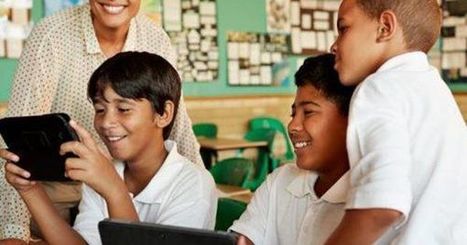

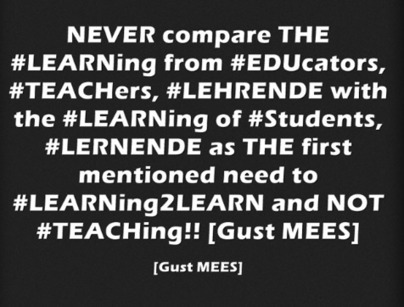





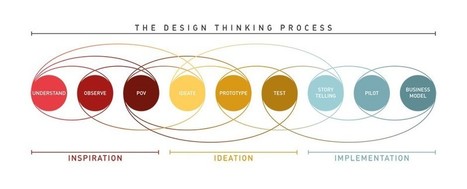

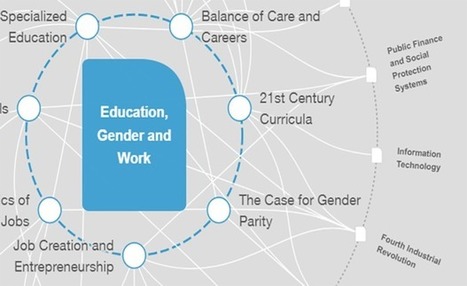



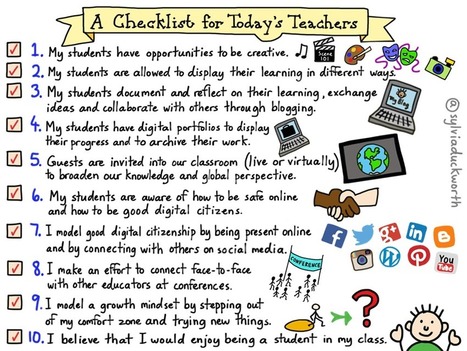


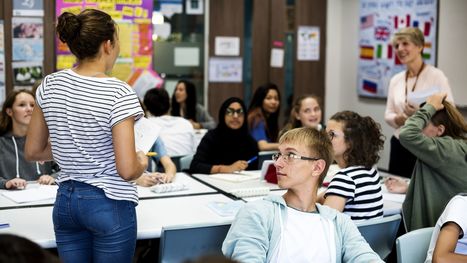

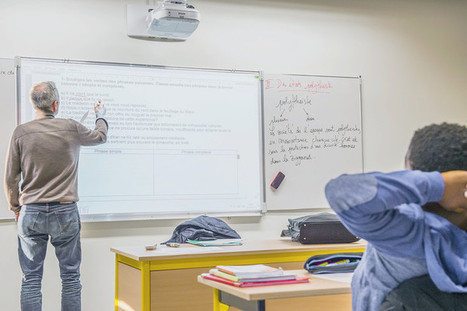

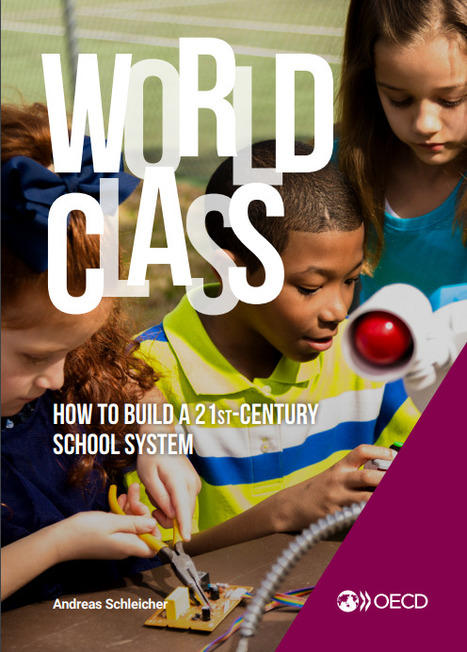
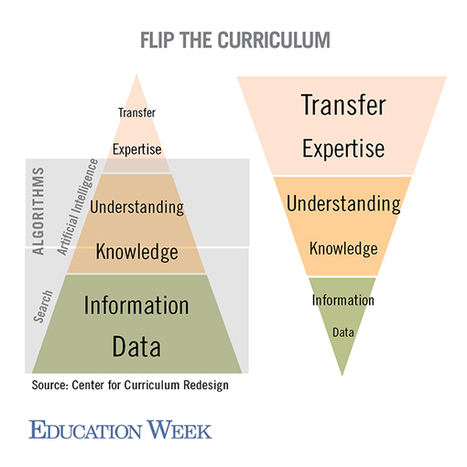


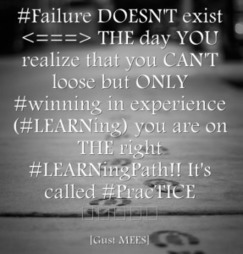


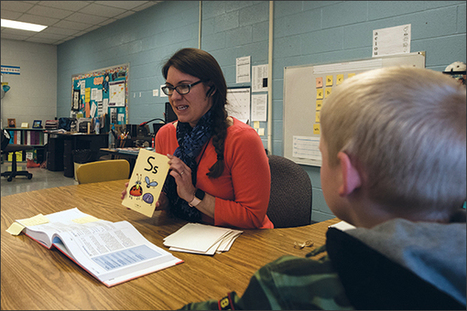
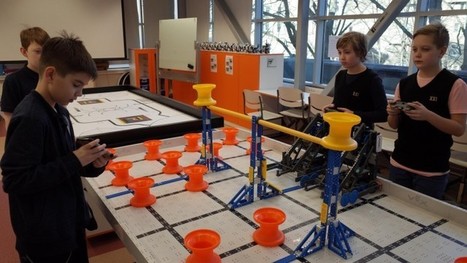
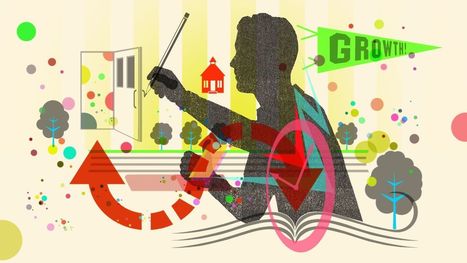
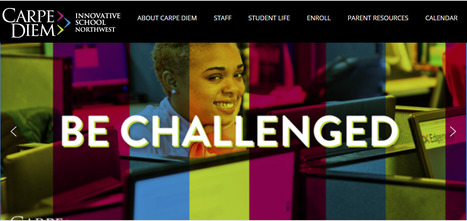







Changing The Learning Process
Until now, this level of personalization has been limited to small classrooms, though AI makes every classroom feel like a small one. AI systems analyze students' progress on a scale that teachers alone cannot, effectively minimizing the student-teacher ratio problem. AI systems also erase distance. Learning happens anywhere at any time.
Another benefit of AI-augmented education is that it isn't judgemental. Constructive criticism from an AI tutor can feel less intimidating than a fellow human. Students, especially the underserved, who may not be accustomed to such feedback, are likely to respond more positively to this feedback and are thus more likely to seek it out in the future. Feedback from AI systems is instantaneous and thereby extremely effective and can be acted on immediately.
Learn more / En savoir plus / Mehr erfahren:
https://www.scoop.it/t/21st-century-learning-and-teaching/?&tag=AI
https://www.scoop.it/t/21st-century-innovative-technologies-and-developments/?&tag=AI